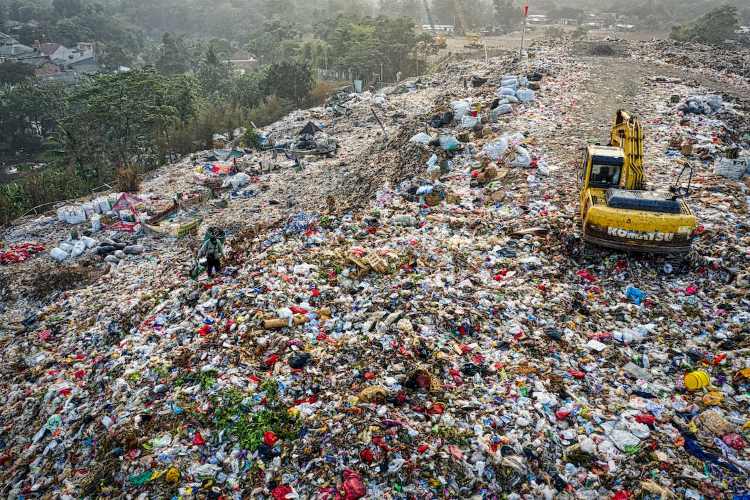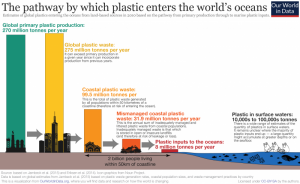
A recent study published in Nature has revealed the true extent of the plastic pollution crisis, finding that plastic debris is now found in every corner of the world, from the deepest oceans to the highest mountains. The study, which was conducted by a team of researchers from the University of Exeter, used satellite data to track the movement of plastic debris in the ocean. They found that plastic is now present in all major ocean gyres, as well as in remote areas such as the Arctic and Antarctic. The researchers also found that the density of plastic debris is increasing, with the highest concentrations found near land and in areas with high human activity.
The study by Veronica Nava and colleagues suggest that countries must arrive at a standard or system for measuring plastic pollution. They created a protocol for classifying and measuring plastic pollution in freshwater bodies and used it for samples collected at the surface of 38 lakes and reservoirs. They collected data on the population around the lakes, the lake’s depth and measured the urban catchment areas. Plastics were sorted by shape, colour and size, and were studied using spectroscopic methods to study the polymers.
READ I Climate finance: The most vulnerable countries need more than promises
Solution to plastic pollution
The findings of the study are wake-up calls for the world. They show that plastic pollution is a truly global problem that is having a devastating impact on the environment. Plastic debris can entangle and kill marine animals, and it can also break down into smaller pieces that are ingested by fish and other marine life. These microplastics can then enter the human food chain, with unknown consequences for human health.
The study’s findings are particularly alarming because they show that plastic pollution is not just a problem for coastal areas. Plastic debris is now found in the most remote parts of the world, including the Arctic and Antarctic. This suggests that the problem of plastic pollution is only going to get worse in the future, as plastic continues to accumulate in the environment.
The good news is that the study’s findings also provide us with an opportunity to address the plastic pollution crisis. By understanding where plastic debris is coming from and how it is moving, we can develop more effective solutions to clean up the oceans and prevent further pollution.
One important step is to reduce our reliance on single-use plastics. Single-use plastics are items that are used only once and then discarded, such as plastic bags, straws, and bottles. These items are often made from non-recyclable plastics, and they can take hundreds of years to break down in the environment.

We can all do our part to reduce plastic pollution by taking simple steps like bringing our own reusable bags when we go shopping, using metal straws instead of plastic ones, and refilling our water bottles instead of buying new ones. We can also support businesses that are committed to reducing their use of single-use plastics.
Another important step is to improve waste management. In many parts of the world, waste is not properly managed, which leads to plastic pollution. We need to invest in better waste management systems that can capture and recycle plastic debris. We also need to educate people about the importance of recycling and proper waste disposal.
The plastic pollution crisis is a serious problem, but it is one that we can solve. By working together, we can reduce our reliance on single-use plastics, improve waste management, and clean up the oceans.
The future of plastic pollution is uncertain. On the one hand, the problem is only getting worse. Plastic production is expected to increase by 40% by 2030, and this will lead to more plastic pollution. On the other hand, there is a growing movement to reduce plastic pollution. Governments are starting to regulate plastic production and use, and businesses are developing new ways to reduce their plastic footprint.
Another study by Hudson Pinheiro and colleagues, also published in Nature, proved that large pieces of plastic litter account for the largest share of human-generated debris found in coral reefs at 25 different locations in the Pacific, Atlantic and Indian oceans. Plastic particles were found even at reefs as deep as 30–150 meters.
The UN members are in negotiations since March 2022 to arrive at a binding treaty in 2024 and ratify it in 2025. Such treaties invariably takes 5-15 years to complete. A lot of time is spent on discussing how they would make decisions. To achieve a treaty on fast track, upcoming sessions need to be concluded quickly.
It is too early to say what the future holds for plastic pollution. However, this is a problem that we cannot ignore. We need to act now to reduce plastic pollution and protect our environment.
(This article is written with AI inputs.)
